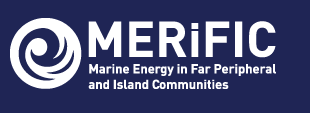List of WP5 documents
This work package is designed to identify and capture the sustainable economic opportunities that marine renewable energy can present to peripheral and island communities such as Cornwall and the Isles of Scilly and Finistère and the Parc Naturel Marin d’Iroise, and to identify strategic actions to support the long term development of this sector across the cross border region.
Task 5.1: Supply chain development
This action will identity existing best practice across the two regions in supporting supply chain development for the marine energy sector, such as the integration and diversification of local businesses. A major output of this action will be the production of a web based supply chain toolkit that can help guide other regions.
Task 5.2: Procurement code of practice
This will include the identification and development of best practice in procurement, in order to maximise the opportunities for local/regional businesses to participate in the development of the marine energy sector. Partners will work together to develop a code of practice to be applied across the regions, and which will also form an integral element of the supply chain toolkit to be developed within action 5.1.
Task 5.3: Skills development
This action will aim to identify both the existing skills capacity and future needs within the two regions to support the development of marine renewable energy. This will include for example a review of the existing skills provision, such as technical and academic training facilities, and identification of complementary facilities. Partners will work together to develop promotional tools to showcase the facilities that exist across the regions, and to encourage the development of a strong skills base as will be required to support this emerging industry.
Task 5.4: Economic development strategy
This action will develop a transferable framework for sustainable economic development, as well as producing a comprehensive strategy for both Cornwall and the Isles of Scilly and Finistère (incorporating the Parc naturel marin d’Iroise). This strategy will include information relating to potential market size and export opportunities and will detail strategic actions to be undertaken across the two regions to facilitate the long term development of marine renewable energy projects across the cross border region.
Task 5.5: Structural simulation in the marine energy sector
Marine renewable energy is a new industry. In order to allow the industry to advance towards maturity as quickly as possible, this action plans to collect and document the learning from the project with respect to the whole life of a marine renewable energy project, i.e. from initial conception and design through to final decommissioning. An initial activity diagram will be constructed using the IDEF0 modelling technique to show the main relationships between activities and the outputs of each.
Task 5.6: Infrastructure
The development of marine renewable energy projects is expected to present significant challenges to existing infrastructure, in particular relating to the electricity distribution and transmission network of the two regions. Similar to onshore wind, marine energy devices will not produce energy at a consistent rate, and production levels will vary according to the prevailing offshore conditions. This can have implications for the electricity grid to which they are connected. Further, there is the challenge of connecting offshore renewable energy devices to the mainland, and this is especially the case with peripheral and island communities. This action will therefore examine these issues across the two regions, investigating the capacity of existing electricity grids to integrate marine energy production, and further the grid connection options between islands and the mainland. The outputs from this action also be of great significance to other peripheral and island communities outside of the MERIFIC partnership that will be facing similar challenges.
Task 5.7: Ports
This action will identify the regional logistical needs of ports in the deployment of marine renewables, for example in the installation, operation and maintenance of marine energy devices. Experiences gained from the initial installation of the Wave Hub in Cornwall will help to inform this action, as this will be the first large scale deployment of devices within the cross border region. Existing facilities across the two regions will be examined to identify any potential complementarity and opportunities for cross border additionality.
